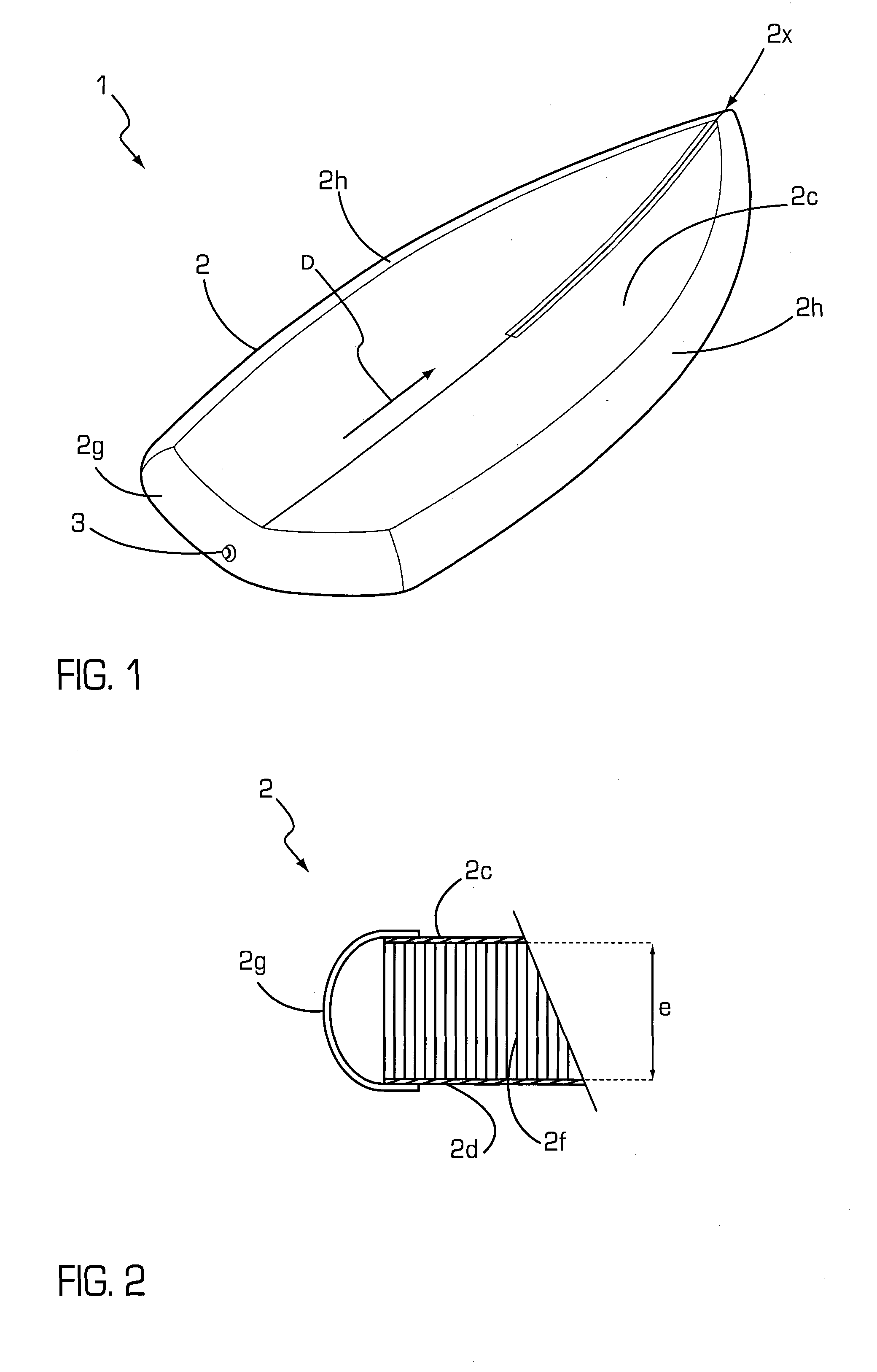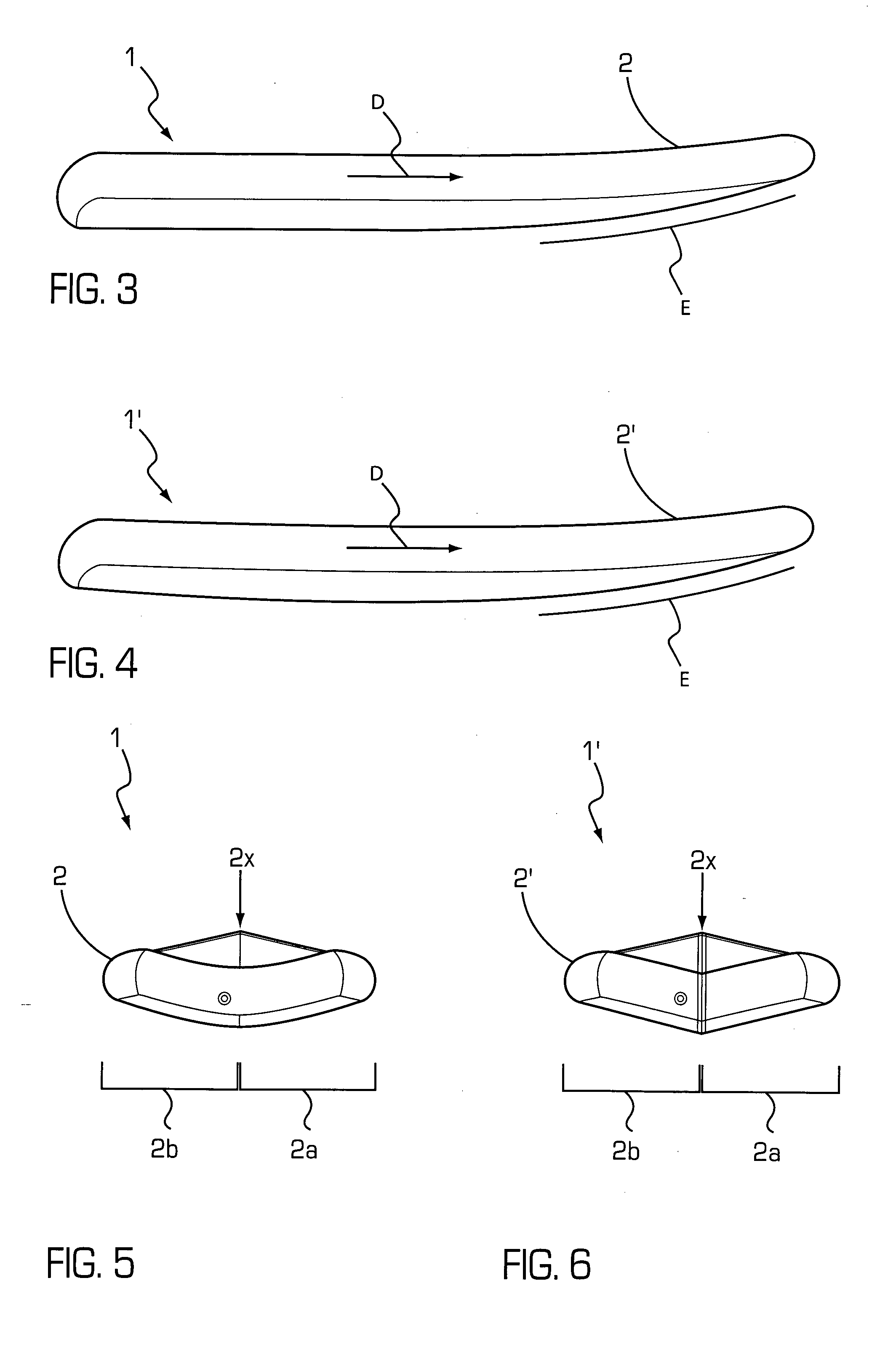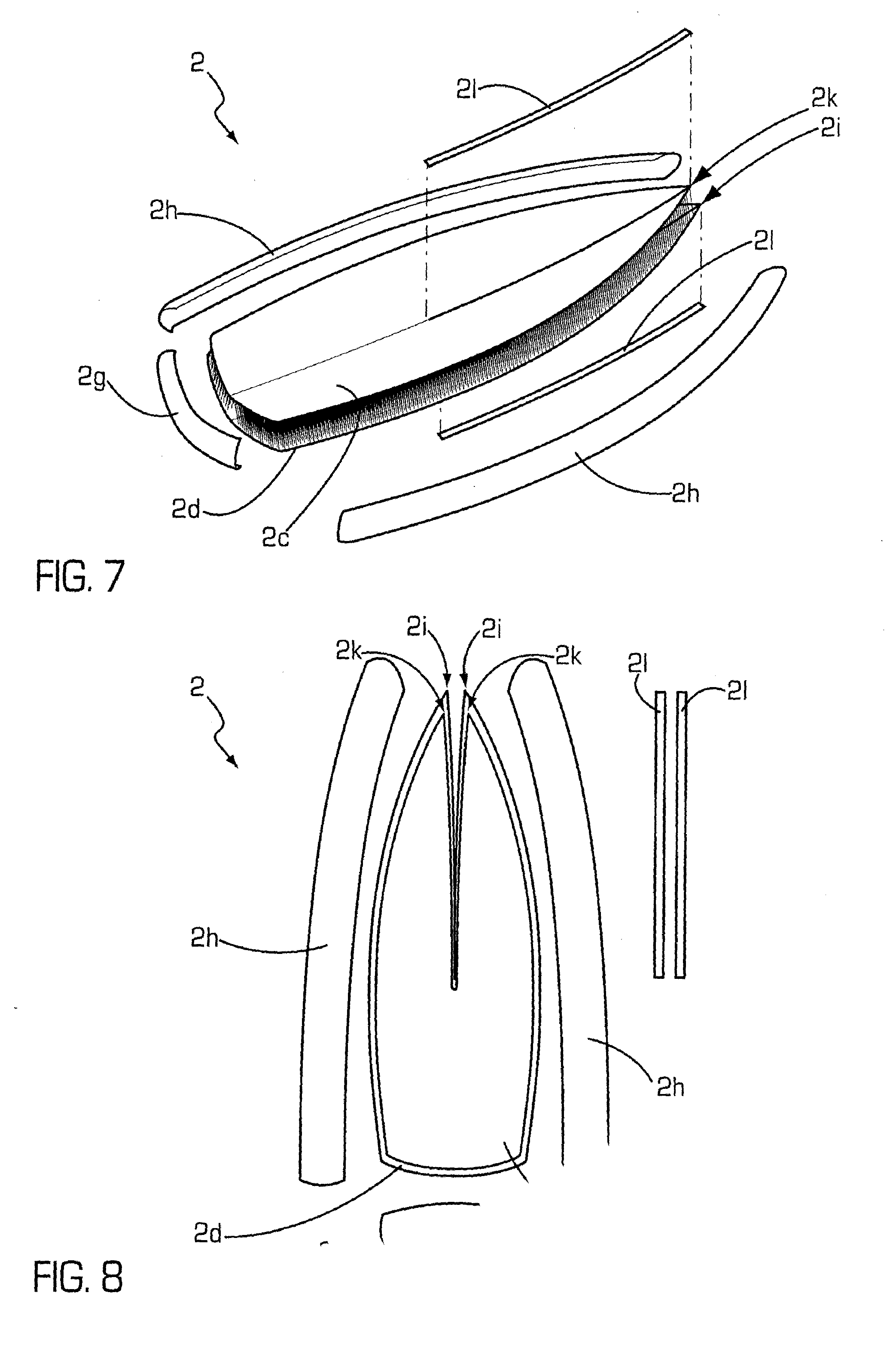Inflatable hull and buoyant vehicle, in particular a dinghy
a technology which is applied in the field of inflatable hull and buoyant vehicle, can solve the problems of limited rigidity of inflatable hull, and inability to support the weight of one or more crew members, and achieves the effect of heavy weight and simple manufacturing
- Summary
- Abstract
- Description
- Claims
- Application Information
AI Technical Summary
Benefits of technology
Problems solved by technology
Method used
Image
Examples
Embodiment Construction
[0056]If one refers to FIG. 1, in a preferred form of implementation, the inflatable hull (1) is composed of at least one pneumatic envelope (2) and is advantageously equipped with an inflation and deflation valve (3). The inflatable hull is designed to be rolled or folded. It is light and has very small outside dimensions, which facilitates its storage, handling and transportation.
[0057]In use, the inflatable hull (1) withstands the forces applied by water on its submersed parts, the stresses applied by the propulsion system fixed on the inflatable hull (1), and the weight of one or more people. It is therefore essential that the inflatable hull (1) be rigid during navigation. To achieve this end, the pneumatic envelope (2) of the inflatable hull (1) is made of dual-wall textile, as can be more clearly seen in FIG. 2. Dual-wall textiles are known, moreover, and their production process will not be described herein. If one refers to FIG. 2, the dual-wall textile takes the form of tw...
PUM
 Login to View More
Login to View More Abstract
Description
Claims
Application Information
 Login to View More
Login to View More - R&D
- Intellectual Property
- Life Sciences
- Materials
- Tech Scout
- Unparalleled Data Quality
- Higher Quality Content
- 60% Fewer Hallucinations
Browse by: Latest US Patents, China's latest patents, Technical Efficacy Thesaurus, Application Domain, Technology Topic, Popular Technical Reports.
© 2025 PatSnap. All rights reserved.Legal|Privacy policy|Modern Slavery Act Transparency Statement|Sitemap|About US| Contact US: help@patsnap.com



